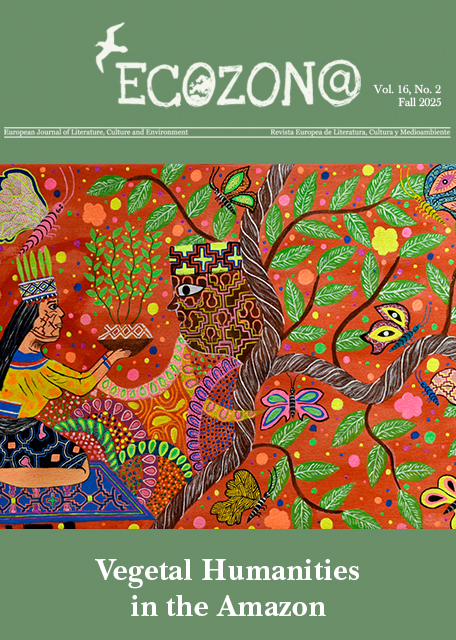Francesco Aloe’s Climate Fiction: Ruins, Bodies and Memories from the Future in "L’ultima bambina d’Europa"
DOI:
https://doi.org/10.37536/ECOZONA.2022.13.2.4710Parole chiave:
Italian cli-fi, Anthropocene, estrangement effect, corporeality, petroculture, collapseAbstract
L’ultima bambina d’Europa (The Last Girl of Europe), written by Francesco Aloe, is a captivating example of Italian cli-fi. Inspired by Pulitzer-prizewinning American novel The Road by Cormac McCarthy, L’ultima bambina d’Europa narrates the story of a young Italian family traveling southbound in an exhausting voyage toward Africa; presumably, there the sun is still visible, the wind is softly blowing, and water and food supplies have not run out, at least, not yet. In this article, I will analyze some of the main cli-fi topoi and I will connect them to the narrative and rhetorical construction employed by the author. Specifically, I will focus on the effect of estrangement, which will encourage readers to embrace a less anthropocentric gaze. Through the perspective of the main protagonists - mother, father and their daughter Sofia - readers will become aware of the gluttonous nature of capitalism that functions only for a few. In their voyage, these three characters traverse a barren and devastated landscape void of temporal and spatial references. However, in this unspecified gloomy future scenario, readers will recognize the ruins of our current society and of our petroculture, heavily influenced by the American model of consumerism. Sofia’s parents, who seem to suffer from “petro-melancholia” (LeMenager, Living Oil 102), recollect nostalgically the petrochemical culture in which they grew up. This is in stark contrast with Sofia’s perspective; she has no recollection of a capitalist society. Finally, this analysis will underline Aloe’s prowess in situating death among the living, the place where it rightfully belongs.
Downloads
##submission.downloads##
Pubblicato
Fascicolo
Sezione
Licenza
Authors who publish with this journal agree to the following terms:
a) Authors retain copyright and grant the journal right of first publication with the work simultaneously licensed under a Creative Commons Attribution License that allows others to share the work with an acknowledgement of the work's authorship and initial publication in this journal (CC BY-NC for articles and CC BY-NC-ND for creative work, unless author requests otherwise.
b) Authors are able to enter into separate, additional contractual arrangements for the non-exclusive distribution of the journal's published version of the work (e.g., post it to an institutional repository or publish it in a book), with an acknowledgement of its initial publication in this journal.
c) Authors are permitted and encouraged to post their work online (e.g., in institutional repositories or on their website) prior to and during the submission process, as it can lead to productive exchanges, as well as earlier and greater citation of published work (See The Effect of Open Access).










